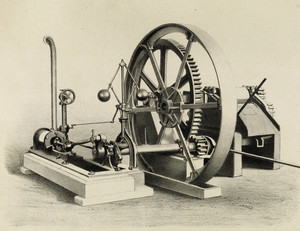
Reproduction from the book Recordações da Exposição Nacional de 1861
Iron steam-driven machine to grind and extract juice from sugarcaneReproduction from the book Recordações da Exposição Nacional de 1861The 1808 arrival in Brazil of the royal family placed the country at the center of political decisions made by the Portuguese court, which adopted a series of measures to promote the industrial and economic development of its most important colony. Among the actions taken was to grant permission for the installation of factories, other manufacturing facilities, and companies, in addition to a permit that dealt with the issue of industrial privilege for inventors and others who introduced new machinery into Brazil. The document, inspired by laws in England and the United States, made Brazil one of the first nations to grant rights to inventors, opening the way for the later issuance of regulations implementing specific legislation regarding patents.
Promulgated in August 1830, the law was a result of negotiations led by engineer Manoel Ferreira da Câmara Bittencourt (1762-1835). Born in Santo Antônio de Itacambira in the Brazilian state of Minas Gerais, Bittencourt moved to Portugal in 1783 to study law and natural philosophy at the University of Coimbra. He graduated in 1787 but did not immediately return to Brazil. He remained in Europe, where he was elected a member of scientific associations such as the Royal Academy of Sciences of Lisbon and the Royal Academy of Sciences of Stockholm, Sweden. He returned to Brazil in 1808 to administer the Royal Diamond Extraction enterprise. He ultimately turned to politics, became a deputy to the Constituent Assembly and, in 1827, a senator. He authored the proposal to regulate the rule on industrial privilege introduced in July 1828.
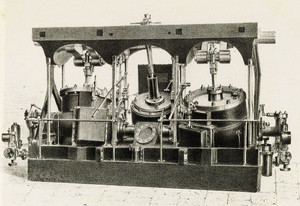
Reproduction from the book Recordações da Exposição Nacional de 1861
Model of a steam engine developed at the Navy arsenalReproduction from the book Recordações da Exposição Nacional de 1861That bill, which later became law, regulated patent rights in Brazil even before they were regulated in Portugal, which did not occur until 1837. “The legislation was innovative at the time,” says science historian João Carlos Vannucci from the National Institute of Industrial Property (INPI) in Rio de Janeiro. “Few countries had an institutional framework that protected intellectual rights.” Only England, the United States, France, Russia, Prussia, Belgium, the Netherlands and Spain had patent laws in effect.
The Brazilian law was intended to promote local development of new machinery and processes as well as attract foreign companies to Brazil. Applications were deposited with the Public Archives. They were required to be accompanied by drawings, narratives, or models that would help explain the invention. They were then submitted for analysis by examiners from the Royal Board of Commerce, Agriculture, Factories, and Navigation. In other cases, they were sent to the Society for Assistance to Domestic Industry, a private company founded in 1831 for the purpose of promoting Brazilian industry. After an initial evaluation, the machinery and processes were subjected to more detailed examinations in order to prove their novelty and utility. The patent was granted free of charge to the first inventor. Patents could remain valid for a period of five to 20 years, depending on their importance, but inventors would forfeit their creative rights if they did not introduce the item onto the market within two years or if they had already obtained a patent on the same invention in another country.
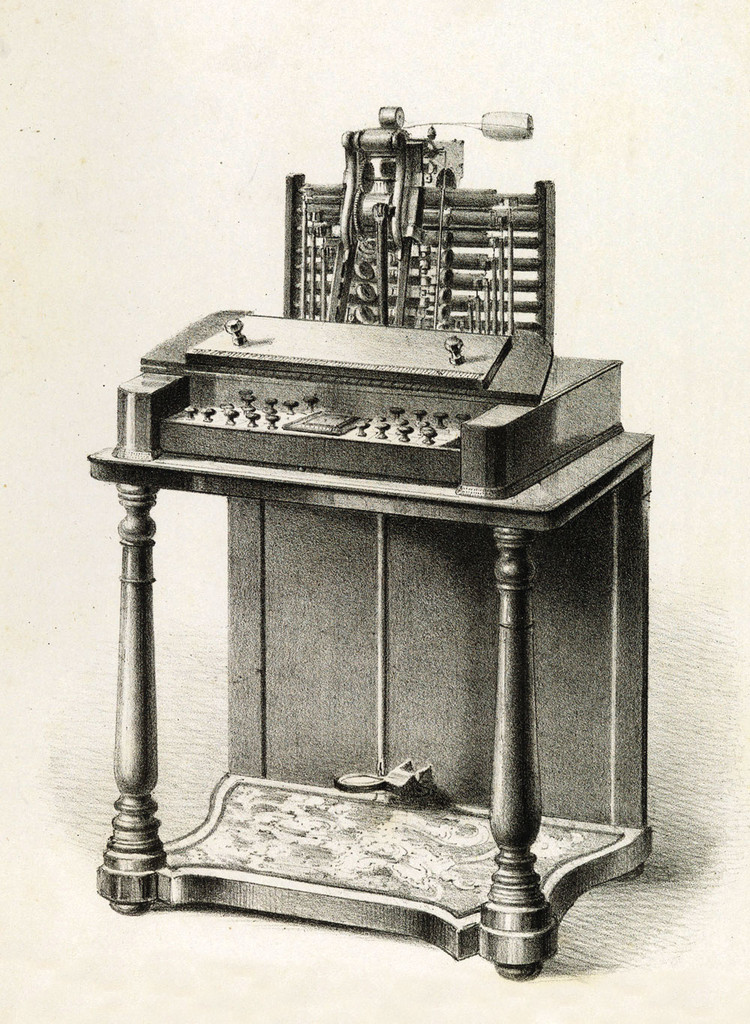
Reproduction from the book Recordações da Exposição Nacional de 1861
Typewriter created by Father Francisco João de AzevedoReproduction from the book Recordações da Exposição Nacional de 1861“The law was quite strict in terms of novelty,” observes economist Andrea Felippe Cabello, from the Economics Department of the University of Brasília (UnB). Several countries that had enacted a patent law granted industrial property rights to copies or adaptations of machinery or processes patented in other countries. “This was not possible in Brazil,” she says. Cabello and fellow economist Luciano Costa Póvoa, a legislative consultant at the Federal Senate, performed an economic analysis of the first Brazilian patent law by studying 783 patents that had been awarded in Brazil between 1830 and 1882. Their evaluation of those documents enabled them to see how Brazilian inventors reacted to the enactment of a patent law.
Patenting was slow to get started in Brazil. Few patents were granted in the first 30 years the law was in force. The situation changed in 1870 with the start of industrialization, expansion of coffee-growing and the scarcity of labor in the countryside. “Almost 80% of patents awarded in the 19th century were granted after 1870, a development also spurred by growing interest on the part of foreigners in protecting their inventions in Brazil, Póvoa says.
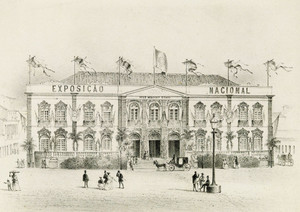
Reproduction from the book Recordações da Exposição Nacional de 1861
Largo São Francisco Central School Central School, site of the First National Exposition of Natural and Industrial Products, now the home of the Institute of Philosophy and Social Sciences of the Federal University of Rio de Janeiro (UFRJ)Reproduction from the book Recordações da Exposição Nacional de 1861According to Póvoa, inventive activity was so closely connected with the economic and social structure of Brazil that the shortage of labor encouraged the invention of many kinds of farm machinery and equipment, especially items for use at coffee plantations such as equipment for cleaning, shelling and drying the beans. Many patent applications were published in O auxiliador da indústria nacional, a publication of the Assistance Society. Those were precisely the documents that Vannucci had studied while pursuing his doctorate, defending his dissertation in 2016 at the Graduate Program in History of Science at the Pontifical Catholic University of São Paulo (PUC-SP).
With physicist and science historian José Luiz Goldfarb from the Simão Mathias Center of PUC-SP as his advisor, Vannucci analyzed 62 applications published in O auxiliador between 1833 and 1862. They involved items such as steam-driven cars, icemaking machines, sugarcane juice extractors, manioc flour toasters, and water filtering devices. Analysis of those documents gives one an idea of how technical skills and science developed in Brazil. “Note that patent examiners had a broad technical knowledge and offered convincing responses based on the scientific theories of the time, even on applications submitted by foreigners,” Vannucci explains.
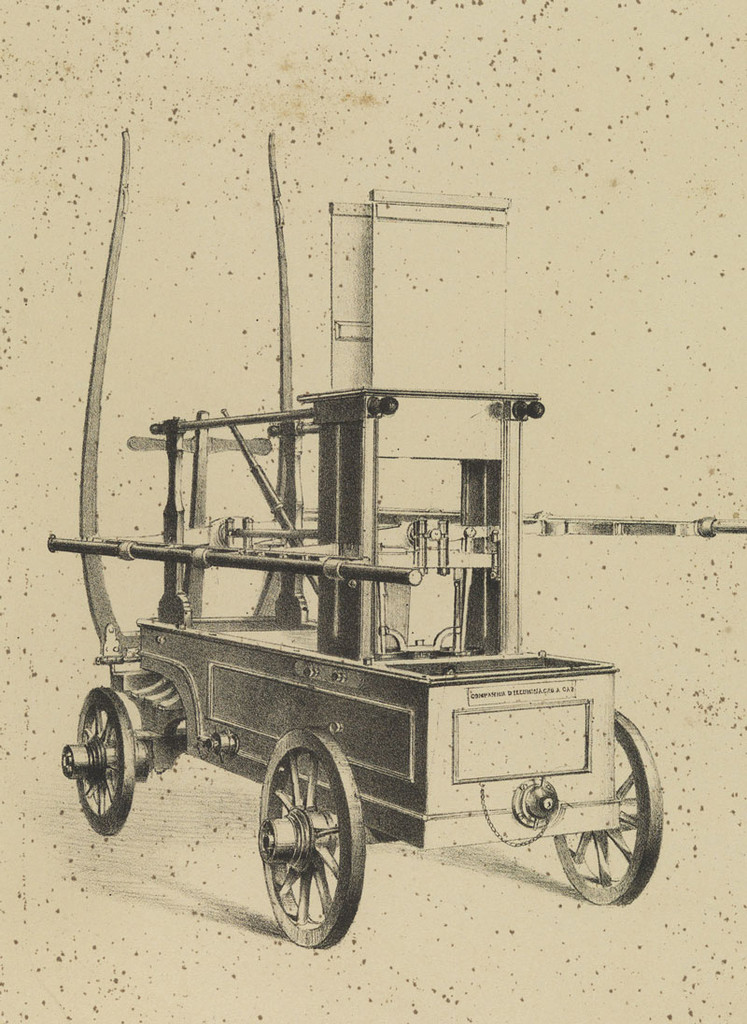
Reproduction from the book Recordações da Exposição Nacional de 1861
Pumper fire truck designed by the Companhia de Iluminação de Gás of Rio de JaneiroReproduction from the book Recordações da Exposição Nacional de 1861Many inventions were introduced at the First National Exposition of Natural and Industrial Products, held in 1861 in Rio de Janeiro. The exposition sought to show the world the extent of technical and scientific advances Brazil had achieved through its incipient industrial activity. The event was a success with the public, according to press reports from the time. About 50,000 people visited the exposition on display at the Largo São Francisco Central School building for 46 days. Prominent among the principal inventions displayed were the so-called typing machine designed by a priest from Paraíba, Francisco João de Azevedo (1814-1880) that was a precursor of the modern typewriter (see Pesquisa FAPESP Issue No. 66). There were also some very large objects, such as a pumper fire truck exhibited by the Companhia de Iluminação de Gás of Rio de Janeiro and a model of a locomotive developed at the Ponta d’Areia Foundry and Shipbuilding Establishment in Niterói, also in Rio de Janeiro.
Republish
